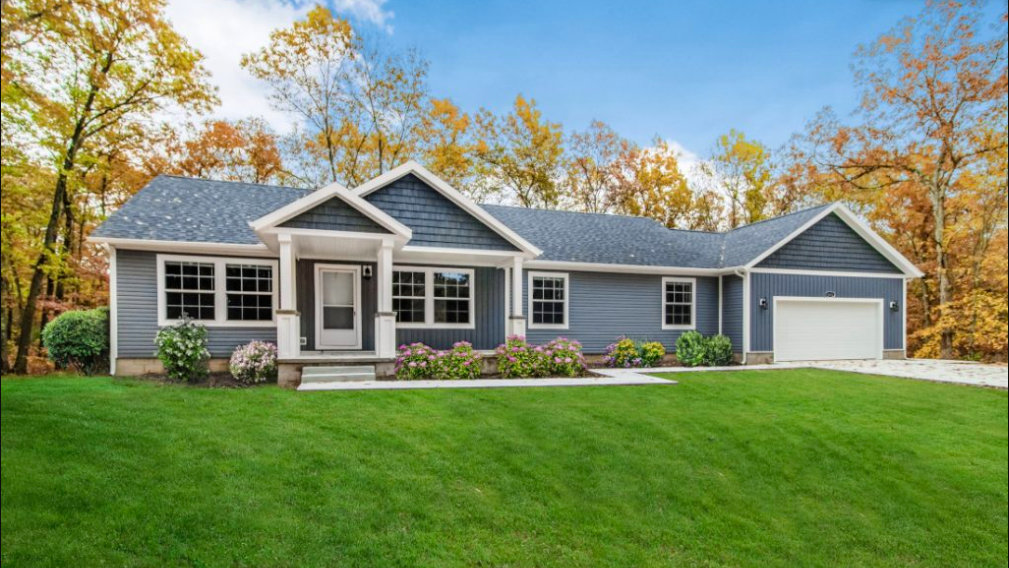Park Models are small cabin style homes, much like Manufactured Homes. A fully functioning small home limited to under 400 sq.ft., with a full kitchen, full bathroom, bedroom, and front living area. Originally designed for recreational living in the outdoors, they are becoming popular with the alternative ‘Tiny Home’ movement as well as for ADU’s. Built on a solid double I-beam chassis, with axles/wheels and a towing hitch, these well built Parks are easy to transport and set-up. A wonderful comfortable small home, remember to talk with your local contractor for proper and legal set-up. Ahh…add a Lanai, gentle Trade winds, Island Life beckoning…

Manufactured Homes are federal (HUD) regulated factory built homes (they are not mobile-homes). A sectional floor plan built on an double I-beam chassis with removable axles/wheels/hitch for transport, the homes are nearly the same as most site built homes. Built in a controlled factory setting, assembly style, the homes are built just as if on site, but protected from the elements. The Manufactured Home is one of the most affordable options for home ownership! Talk with your Rep to make sure the home is built to Hawai’i Wind Zone 3, and is deliverable! (Please Note, we will not be able to freight Manufactured Homes to Hawaii in 2022)

Modular Homes are very similar to site built homes , but built to the same standards in a factory, on a flatbed trailer to be transported to the building site for placement. Built in ‘modular’ units, each are craned onto the foundation and configured together. In general the overall cost, and logistics prevents these homes for Hawai’i.

Steel Buildings are the future of the building industry. Known primarily for simple structures from sheds, garages, barns, commercial buildings, exciting home plans are also in the mix. In short, the steel columns are replacing standard wood framing, very easy to assemble. New software allows for exact engineering plans actually no different than standard home plans. This is a huge savings, and will be the most affordable home option entering the market today. Remember to talk with your local contractor for proper and legal set-up.

Plantation homes are old 60+ year old homes once lived in by workers assigned to them by the island plantations of sugar cane and pineapple farms, and cattle ranching. The classic Hawaiian look with clapboard siding, corrugated tin roof, single wall construction, with the front porch…not too many left, 600-900 sq.ft., generally 2 bedroom 1 bath…if we can find one, we know the best house mover in the Islands!

ADU or Additional Dwelling Unit, is generally considered the second home on the property, the first being the main residence. This home is often restricted in size, location, style, etc. Remember to talk with your local contractor for proper and legal set-up.
Tiny Homes are essentially small homes built on truck/trailer chassis, meant to be mobile and easy to set-up but still look and feel like a house. Generally considered by most States in the same category as a ‘travel trailer’. Though mobile, this handcrafted home is not meant to be hauled around. The cost is not as ‘low’ as one may think.
Site built is a term for construction on property. Construction on property will follow a UBC/IRC universal building code. This is defined regulations for legal, safe, and proper construction of almost all site built buildings.
Mobile Homes the precurser to Manufactured Homes are not built anymore beginning in 1976. These generally singlewide homes are essentially a glorified travel trailer. In most places they are not allowed or accepted for property placement, even in mobilehome parks. They cannot be remodeled to meet any new building codes including the HUD code for Manufactured Homes.
Shipping container conversions are the steel shipping containers used for freight, often seen stacked on ocean container ships, and semi-trailers transporting on our roadways. Though inexpensive to purchase, other than a creative novelty, to convert to a habitable (and comfortable) home, ultimate cost for installing windows, doors, plumbing, electricity, insulation, etc., may not be any more of an advantage than other home options. Talk with your contractor in regards to conversion and proper legal set-up.